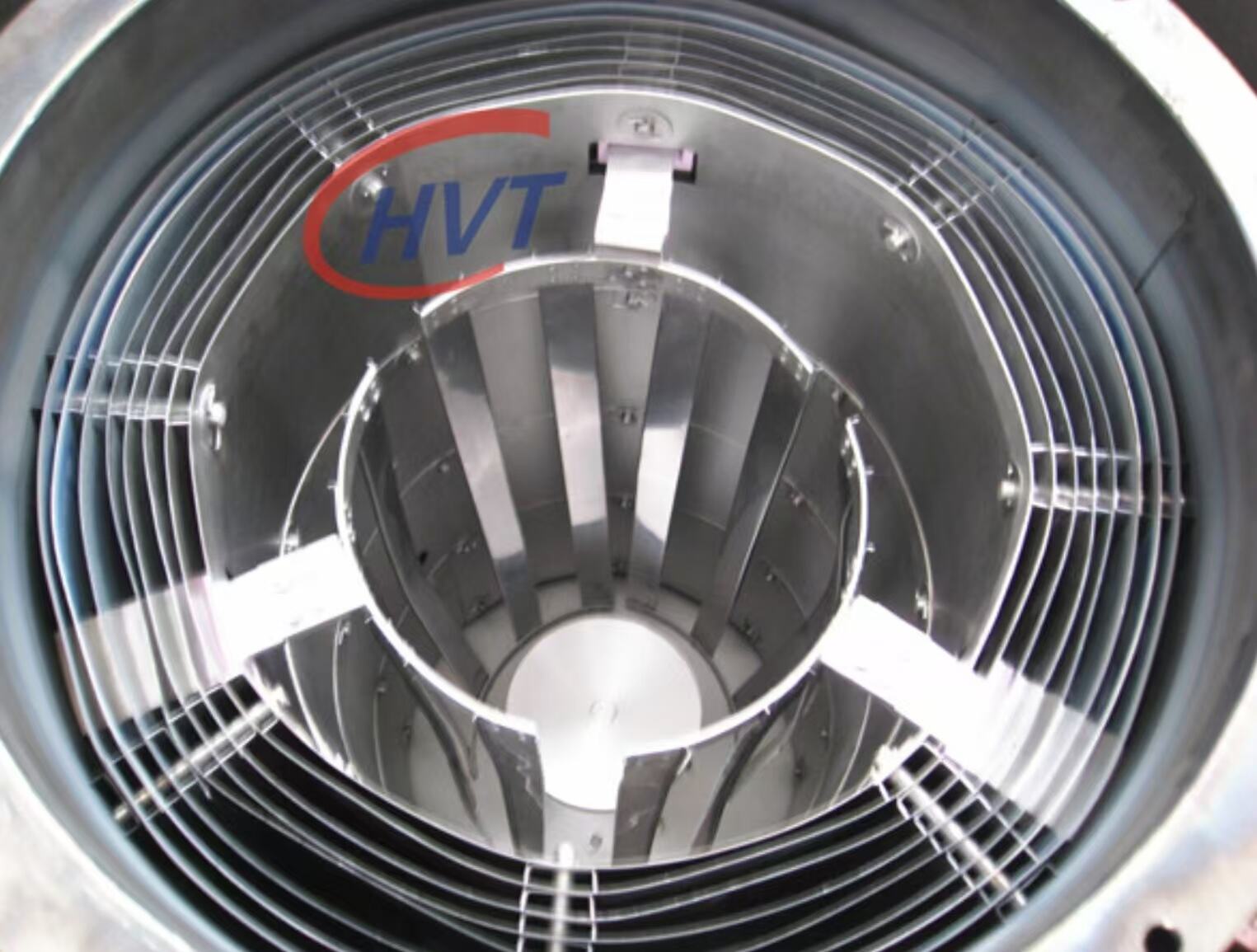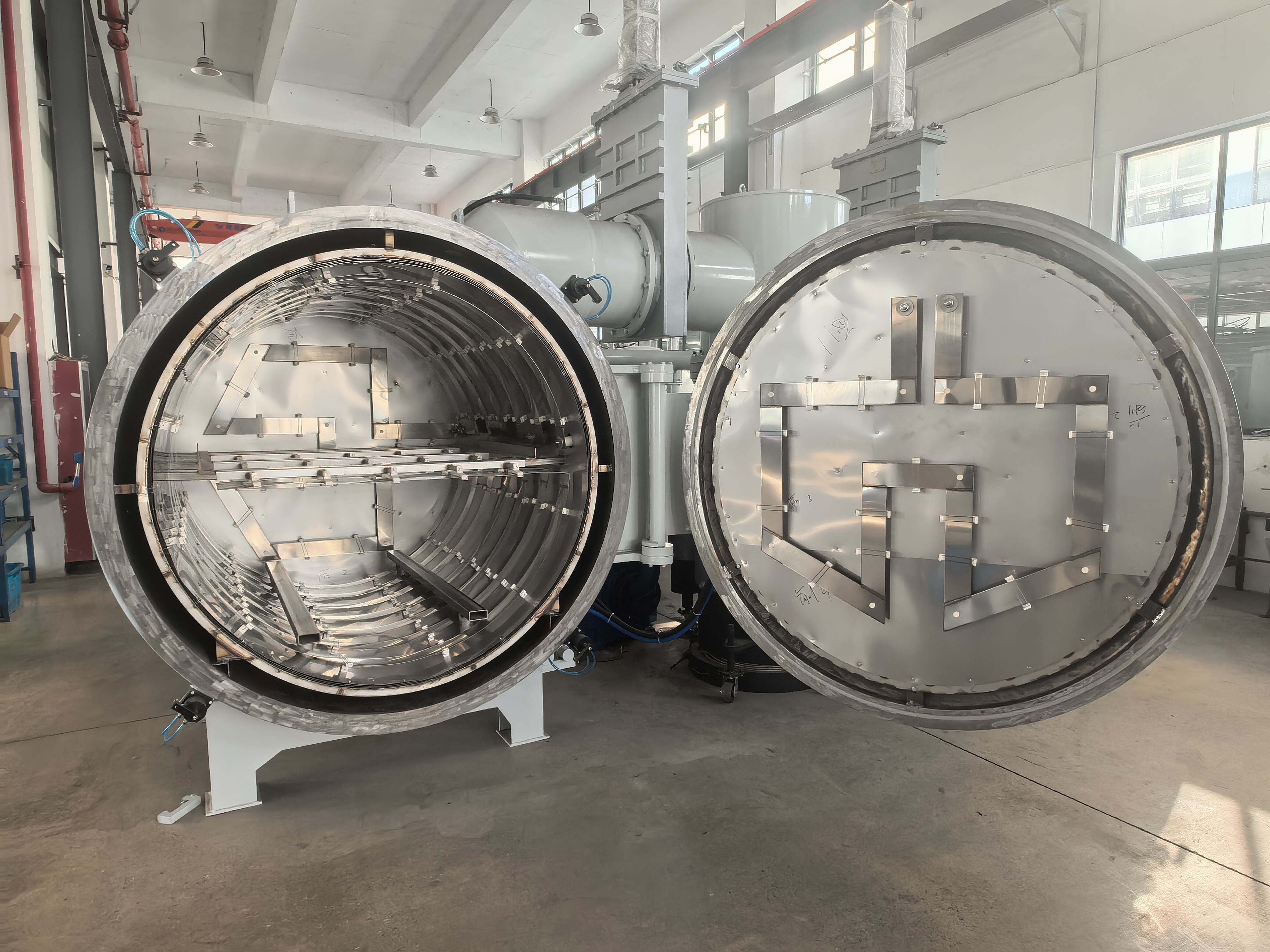Was sind Heizkammern ? Definition und Kernfunktionen
Definition von Heizkammern in wissenschaftlichen Kontexten
In der wissenschaftlichen Forschung spielen Heizkammern eine wirklich wichtige Rolle, da sie kontrollierte Umgebungen schaffen, in denen während Experimenten spezifische Temperaturen aufrechterhalten werden können. Wenn diese Kammern ordnungsgemäß funktionieren, helfen sie Forschern, zuverlässige Ergebnisse zu erzielen, da die Temperatur während der Tests stabil bleibt. Labore auf der ganzen Welt verlassen sich darauf, um beispielsweise zu untersuchen, wie verschiedene Materialien auf Temperaturveränderungen reagieren, um zu beobachten, was während chemischer Reaktionen unter kontrollierten Bedingungen geschieht oder sogar um Zellen in biologischen Studien anzuzüchten. Die richtige Temperatur zu wählen, ist tatsächlich von großer Bedeutung, andernfalls könnten die gesammelten Daten lediglich zufällige Umwelteinflüsse widerspiegeln, statt das tatsächliche Geschehen innerhalb des Experiments abzubilden.
Arten von Heizkammern für Forschungsanwendungen
Es gibt mehrere Arten von Heizkammern, die alle für spezifische Forschungsbedürfnisse konzipiert sind. Die meisten Labore arbeiten mit drei Hauptoptionen: leitende, konvektive und strahlende Systeme. Leitende Modelle eignen sich am besten für feste Proben, da sie über direkten Kontakt zwischen Material und Kammerwänden erhitzt werden. Konvektive Geräte verfolgen einen anderen Ansatz, indem sie beheizte Luft durch den Probenbereich blasen, was dabei hilft, eine gleichmäßige Temperaturverteilung über größere Bereiche hinweg aufrechtzuerhalten. Dann gibt es noch die Strahlungsheizung, die auf Infrarotwellen basiert. Diese sind besonders bei Biologen und Chemikern beliebt, die empfindliche Experimente durchführen, bei denen präzise thermische Kontrolle entscheidend ist. Wissenschaftler wählen die Kammer, die am besten zu ihren jeweiligen Projektzielen passt, obwohl manchmal auch Budgetbeschränkungen oder die Geräteverfügbarkeit eine ebenso große Rolle bei der Entscheidungsfindung spielen.
Warum präzise Temperaturregulierung in der Forschung wichtig ist
Auswirkungen der thermischen Stabilität auf die Versuchsergebnisse
Die richtige thermische Stabilität spielt bei Experimenten, die genaue Ergebnisse erfordern, eine große Rolle. Wenn die Temperaturen zu stark schwanken, entstehen unerwünschte Variationen, die wissenschaftliche Daten unzuverlässig und schwer nachvollziehbar machen. Studien zeigen, dass sogar geringe Temperaturveränderungen die Geschwindigkeit chemischer Reaktionen beeinflussen können, was bedeutet, dass präzise Temperaturkontrolle nicht nur wünschenswert, sondern absolut notwendig ist. Besonders die Pharmazie und die Werkstoffwissenschaften sind darauf angewiesen, da ungleichmäßige Temperaturen die Wirksamkeit von Medikamenten oder die Eigenschaften von Materialien komplett zerstören können. Durch eine genaue Kontrolle der Temperaturverhältnisse können Wissenschaftler immer wieder zuverlässige und gleichbleibende Ergebnisse erzielen, wodurch sowohl die Grundlagenforschung als auch die praktische Produktentwicklung vorangetrieben werden, ohne Zeit und Ressourcen mit fehlgeschlagenen Versuchen zu verschwenden.
Herausforderungen bei der Erhaltung einer gleichmäßigen Wärmeverteilung
Eine gleichmäßige Wärmeverteilung im gesamten Versuchsraum bleibt bei der Arbeit mit solchen Systemen ein großes Problem. Die Art und Weise, wie die Luft im Inneren zirkuliert, sowie die Positionierung der Proben führen dazu, dass sich Hotspots und kühle Bereiche bilden, was die durchgeführten Tests stört. Studien zeigen, dass solche Temperaturschwankungen dazu führen, dass einige Stellen der Bauteile übermäßig erhitzt werden, während andere kühl bleiben. Beide Szenarien beeinflussen die Messungen stark und machen diese unbrauchbar. Um dieses Problem zu beheben, müssen Wissenschaftler ihre Versuchsparameter sorgfältig anpassen, wenn sie verlässliche Ergebnisse erzielen möchten. Für alle, die Tests durchführen, bei denen stabile Temperaturen erforderlich sind, ist eine gleichmäßige Wärmeverteilung nicht nur von Vorteil, sondern absolut notwendig, um aussagekräftige Daten zu erhalten.
Wie Heizkammern den Anforderungen an die Thermomanagement bedienen
Moderne Heizkammern verfügen über hochentwickelte Bedienfelder, mit denen Forscher präzise Temperatureinstellungen vornehmen und bei Bedarf schnell Anpassungen vornehmen können. Die besten Modelle sind mit innovativer Isolierungstechnologie ausgestattet, die Energieverluste reduziert und gleichzeitig stabile Bedingungen für anspruchsvolle Laborarbeiten wie Protein-Kristallisationsstudien gewährleistet. Die meisten modernen Systeme arbeiten zudem eng mit Datenerfassungsgeräten zusammen, sodass Wissenschaftler Temperaturschwankungen minutengenau überwachen und Einstellungen bei Bedarf optimieren können. Wenn all diese Komponenten ordnungsgemäß zusammenspielen, sorgen sie für verbesserte Temperaturregelung und helfen gleichzeitig, Energiekosten zu senken. Labore, die komplexe Experimente durchführen, benötigen diese Art von Effizienz, um wettbewerbsfähig zu bleiben, ohne das Budget zu überschreiten.
Schlüsselforschungsbereiche, die Heizkammern nutzen
Materialwissenschaft: Phasenübergangsstudien
Heizkammern sind wirklich wichtige Werkzeuge in der Forschung der Materialwissenschaften, insbesondere wenn untersucht wird, wie Stoffe von einem Zustand in einen anderen übergehen, beispielsweise wenn Materialien schmelzen, Kristalle bilden oder anderen festen Zustandsänderungen unterzogen werden. In diesen speziellen Kammern erzeugen Wissenschaftler sorgfältig kontrollierte Bedingungen, um beobachten zu können, was mit Materialien während dieser Übergänge geschieht. Die Temperaturregelung ist hierbei entscheidend, da sie Forschern ermöglicht, verschiedene Materialeigenschaften zu verstehen und herauszufinden, ob diese Materialien für spezifische Anwendungen geeignet sind. Die Fähigkeit, diese Bedingungen präzise anzupassen, spielt eine große Rolle bei der Entwicklung neuer Materialien mit spezifischen Eigenschaften, die beispielsweise für Bauprojekte, industrielle Produktionsverfahren und sogar winzige elektronische Komponenten auf Nanoskala-Ebene benötigt werden. Verschiedenste Industrien profitieren von dieser detaillierten Materialanalyse, da dadurch im Laufe der Zeit bessere Produkte und effizientere Fertigungstechniken entstehen.
Chemie: Reaktionskinetik und Katalyse
Die Temperaturregelung spielt in Chemielaboren eine wesentliche Rolle, wenn untersucht wird, wie Reaktionen ablaufen und welche Faktoren dafür sorgen, dass Katalysatoren ordnungsgemäß funktionieren. Spezielle Heizgeräte schaffen stabile Temperaturbedingungen, die Forscher benötigen, um genau zu beobachten, wie sich Hitze auf Reaktionsgeschwindigkeiten auswirkt. Wenn Wissenschaftler diese kontrollierten Bedingungen aufrechterhalten können, erzielen sie bessere Versuchsergebnisse und gewinnen mehr Wissen darüber, wie verschiedene Chemikalien miteinander reagieren. Dieses Wissen ist übrigens nicht nur für die Forschung wichtig. Chemische Unternehmen verlassen sich täglich darauf, um ihre Produktionsprozesse zu optimieren. Zum Beispiel passen Hersteller die Temperaturen in ihren Reaktoren so an, dass gewünschte Reaktionen beschleunigt und unerwünschte Nebenreaktionen verlangsamt werden. Eine optimale Temperatursteuerung bedeutet weniger verschwendete Materialien und spart letztendlich Kosten entlang der gesamten chemischen Produktionskette.
Physik: Analyse der Wärmeleitfähigkeit
In Physiklaboren auf der ganzen Welt verwenden Forscher regelmäßig Heizkammern, um zu testen, wie gut verschiedene Materialien Wärme leiten und effizient Wärme übertragen. Wenn Wissenschaftler die Temperaturen innerhalb dieser Kammern konstant halten, können sie tatsächlich beobachten, was passiert, wenn Materialien heiß werden – etwas, das für die Entwicklung besserer Isoliermaterialien besonders wichtig ist. Die Art und Weise, wie Materialien mit Wärme umgehen, spielt in vielen Bereichen eine große Rolle. In der Elektronik müssen wir beispielsweise wissen, wie Bauteile auf Wärmestau reagieren, während Klimawissenschaftler ähnliche Prinzipien untersuchen, um Wettermuster und Energieflüsse in Ökosystemen zu verstehen. Das Wissen über thermische Eigenschaften hilft dabei, verschiedenste Produkte zu entwickeln, bei denen Temperaturregelung entscheidend ist – von Smartphones, die auch bei langen Gesprächen nicht überhitzen, bis hin zu Gebäudekonzepten, die auch an schwülen Sommertagen für ein angenehmes Raumklima sorgen.
Vorteile der modernen Heizkammer TECHNOLOGIE
Verbesserte Genauigkeit durch fortschrittliche Kalibrierung
Die neueste Generation von Heizkammern hat die Art und Weise, wie wir die Temperaturregelung handhaben, dank ihrer fortschrittlichen Kalibrierungstechnologie wirklich verändert. Was sie auszeichnet, ist dieses unglaubliche Maß an Genauigkeit und Präzision, das zuvor nicht möglich war. Sowohl Labore als auch Fabriken verlassen sich auf diese Funktionen, weil sie einfach hervorragend funktionieren. Die meisten neueren Modelle verfügen über intelligente Feedback-Systeme, die die Heizelemente automatisch anpassen und somit für eine gleichmäßige Temperaturverteilung sorgen. Forscher schätzen diese Technik, da dies bedeutet, dass ihre Experimente tatsächlich zuverlässige und reproduzierbare Ergebnisse liefern. Und wenn Experimente stets zu einheitlichen Ergebnissen führen, dann entstehen echte Durchbrüche in diversen Bereichen – von der Werkstoffforschung bis zur pharmazeutischen Entwicklung.
Sicherheitsprotokolle für die Prüfung gefährlicher Stoffe
Beim Umgang mit gefährlichen Materialien muss stets die Sicherheit an erster Stelle stehen. Moderne Heizkammern sind mit umfassenden Sicherheitsmaßnahmen ausgestattet, um diese Risiken angemessen zu bewältigen. Die Ausstattung umfasst unter anderem explosionsfeste Bauweise, automatische Stromabschaltungen und detaillierte Notfallpläne, die dabei helfen, die Sicherheit der Bediener während der Durchführung von Tests zu gewährleisten. Das Einhalten der branchenüblichen Sicherheitsvorschriften ist nicht nur eine gute Praxis, sondern absolut notwendig, um Labore sicher zu halten und Gefahren durch instabile oder brennbare Chemikalien zu minimieren. Labore, die sich an diese Sicherheitsregeln halten, schaffen Umgebungen, in denen Wissenschaftler tatsächlich arbeiten können, ohne ständig Sorge vor möglichen Unfällen haben zu müssen.

Energieeffizienz im Dauereinsatz
Bei der Entwicklung moderner Heizkammern stellt die Energieeffizienz eines der zentralen Anliegen der Hersteller dar. Diese Geräte verfügen über verschiedene Technologien, die darauf abzielen, den Energieverbrauch zu reduzieren und langfristig Kosten zu sparen. Die meisten Modelle sind mit hochwertigen Isolationsmaterialien sowie intelligenten Energiesteuerungssystemen ausgestattet, welche dazu beitragen, Wärmeverluste zu minimieren, insbesondere bei kontinuierlichem Betrieb. Dies macht sie deutlich besser geeignet für die langfristige Nutzung. Da Labore weltweit bemüht sind, Umweltziele zu erreichen, tragen solche Verbesserungen tatsächlich dazu bei, den Ressourcenverbrauch während Experimenten bewusster einzusetzen. Für Laborleiter und Forscher bedeutet dies reduzierte Energiekosten, ohne Einbußen bei der Leistungsfähigkeit. Zudem können sie ihren Beitrag dazu leisten, den CO2-Fußabdruck innerhalb der wissenschaftlichen Gemeinschaften zu verringern, wo Anstrengungen zum Ressourcenschutz heute mehr denn je an Bedeutung gewonnen haben.
Praxisanwendungen und Fallstudien
Fallstudie: Dampfkammer-Optimierung für Elektronik-Kühlung
Dampfkammern werden heute als eine besonders effektive Methode zur Wärmemanagement eingesetzt, insbesondere in der Elektronikfertigung. Praxisnahe Tests zeigen, dass diese speziellen Kühlsysteme tatsächlich die Leistungsfähigkeit elektronischer Geräte verbessern und deren Lebensdauer verlängern. Sie bieten eine deutlich bessere Temperaturregelung als herkömmliche Methoden, was genau den Anforderungen der heutigen Technologie entspricht, angesichts der Leistungssteigerung unserer Geräte. Hersteller verlassen sich zunehmend auf diese Technik, wenn sie neue Produkte entwickeln. Tatsächlich würden viele moderne Geräte ohne eine geeignete Wärmeabfuhr durch Dampfkammern unter verschiedenen Umweltbedingungen einfach nicht ordnungsgemäß funktionieren.
Anwendung in der Halbleiterfertigung
Heizkammern spielen bei der Halbleiterfertigung eine entscheidende Rolle, insbesondere bei wichtigen Schritten wie der Dotierung und dem Tempern. Ohne sie wäre die präzise Temperaturregelung, die für den Aufbau von Halbleiterschichten erforderlich ist, nicht möglich. Wenn Hersteller dies richtig umsetzen, erzielen sie bessere Ergebnisse bei den Wafern, sowohl hinsichtlich der elektrischen Leitfähigkeit als auch der Haltbarkeit bis zum Ausfall. Branchenberichte zeigen immer wieder, dass Unternehmen, die in bessere Heiztechnologien investieren, pro Charge mehr funktionstüchtige Chips produzieren und gleichzeitig Zeit auf der Produktionslinie sparen. Für Halbleiterhersteller, die mit der ständigen Nachfrage und dem harten Wettbewerb mithalten müssen, sind zuverlässige Heizsysteme nicht nur ein Vorteil, sondern heutzutage eher eine Selbstverständlichkeit.
Rolle bei der Stabilitätstests in der Pharmaindustrie
Pharmazeutische Unternehmen verlassen sich stark auf Wärmekammern für Stabilitätstests, da sie sicherstellen müssen, dass Medikamente ordnungsgemäß wirken und bei Lagerung bei unterschiedlichen Temperaturen sicher bleiben. Diese Kammern ermöglichen es Herstellern, Tests durchzuführen, die den strengen FDA-Vorgaben entsprechen, und stellen gleichzeitig sicher, dass die Wirksamkeit der Medikamente erhalten bleibt, bis sie in die Hände der Patienten gelangen. Studien zeigen, dass selbst geringfügige Temperaturveränderungen die Stabilitätsdauer eines Medikaments beeinträchtigen können, weshalb eine präzise Kontrolle der Bedingungen innerhalb dieser Kammern für die Produktqualität von großer Bedeutung ist. Ohne eine solche Präzision würden echte Risiken sowohl für die Gesundheit der Patienten als auch für die Gewinne der Unternehmen entstehen.
FAQ-Bereich
Wofür werden Heizkammern in der wissenschaftlichen Forschung verwendet?
Heizkammern dienen dazu, kontrollierte Umgebungen mit spezifischen Temperaturen bereitzustellen, die für verschiedene Experimente notwendig sind, um Reproduzierbarkeit und Präzision bei der wissenschaftlichen Datensammlung sicherzustellen.
Welche Arten von Heizkammern sind für Forschungsanwendungen üblich?
Die gängigen Arten von Heizkammern umfassen leitende, konvektive und strahlende Heizsysteme, wobei jedes für unterschiedliche Zwecke bei verschiedenen Experimenten geeignet ist.
Warum ist präzise Temperaturregelung in der Forschung entscheidend?
Präzise Temperaturregelung ist entscheidend, um genaue experimentelle Ergebnisse sicherzustellen, indem Abweichungen minimiert werden, die die Zuverlässigkeit und Wiederholbarkeit wissenschaftlicher Daten beeinflussen könnten.
Welche Herausforderungen sind mit dem Aufrechterhalten einer gleichmäßigen Wärmeverteilung in Heizkammern verbunden?
Herausforderungen umfassen Faktoren wie Luftstrommuster und Probenpositionierung, die zu ungleichmäßiger Erwärmung führen können und potentiell die Integrität der Studienmaterialien beeinträchtigen.
Wie tragen moderne Heizkammern zur Energieeffizienz bei?
Moderne Heizkammern verfügen über hochwertige Isolierung und Energiewirtschaftlichkeitssysteme, um den Energieverbrauch zu optimieren, Betriebskosten zu senken und nachhaltige Forschungspraktiken zu fördern.


